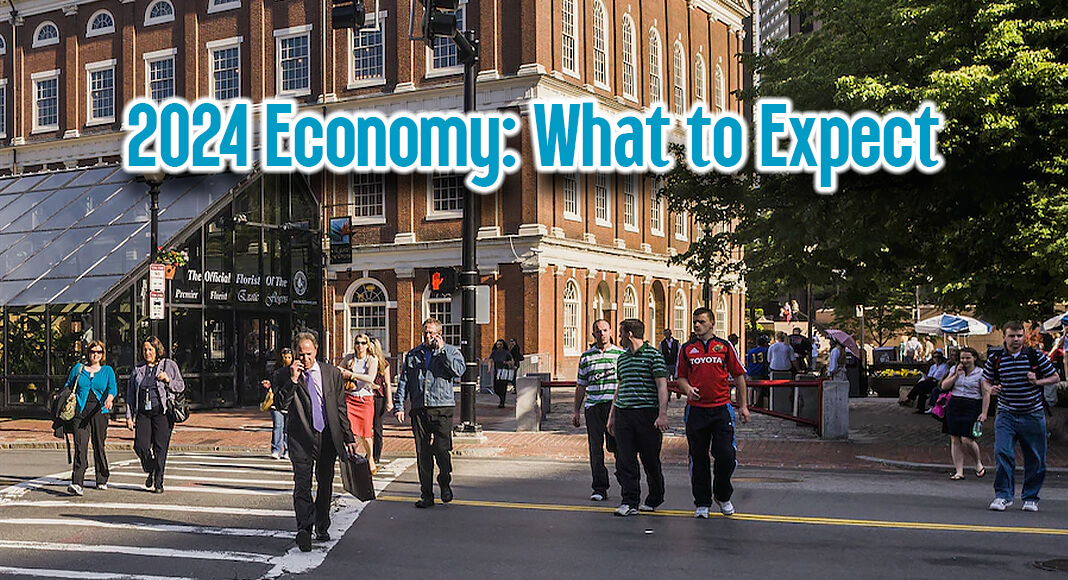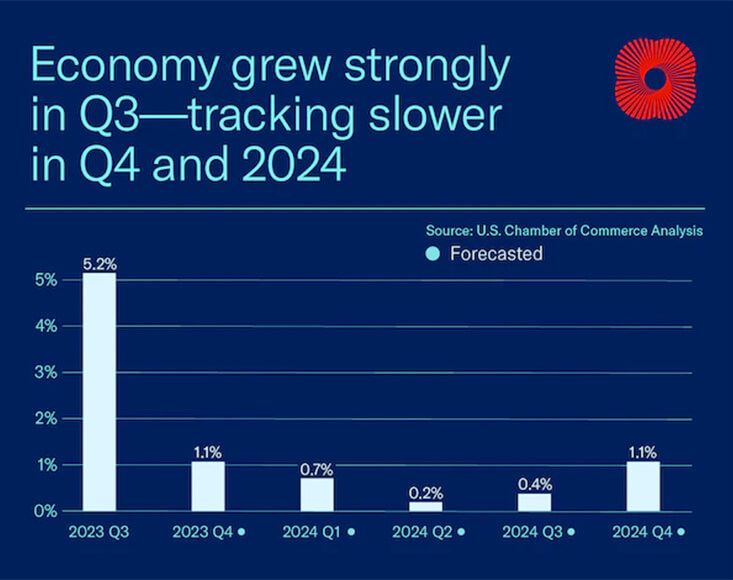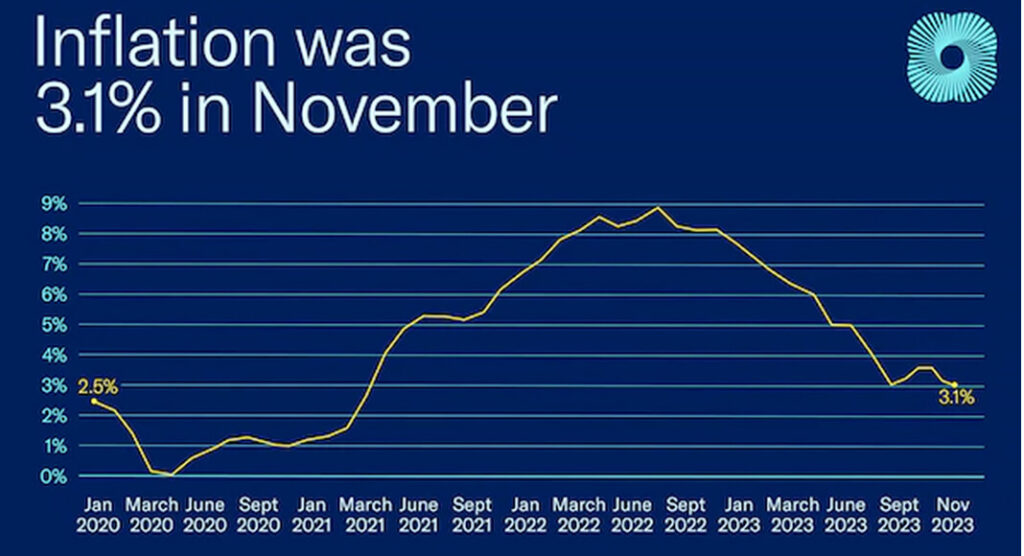
US Chamber of Commerce
By Curtis Dubay
Chief Economist, U.S Chamber of Commerce
A smaller workforce will define the economy in 2024. In fact, it will be the key economic challenge we face for the foreseeable future. A shortage of workers will be hard on businesses, but for some consumers it also means they will always be able to find a job that can support their spending. That will put a floor under any economic weakness in 2024.
Smaller Workforce Is Key to Understanding Future Economic Trends
Our workforce is too small because of simple demographics. The Baby Boomer generation was more than three times larger than the generation that came before it, the Silent Generation. As the Boomers entered the workforce in the early 1960s, labor force participation rose sharply.
However, the following generation, Generation X, was smaller than the Boomers. The Millennial Generation is only slightly larger than the Boomers, and Generation Z is slightly smaller than the Millennials.
This has created a demographic shortfall for the workforce. For economic growth, it is ideal for succeeding generations to be larger than the ones before them. Visualized, it should look like a triangle, with younger generations being larger than the ones that came before. Instead, we have an inverted triangle.
This means that as Boomers retire and exit the workforce, there are not enough workers in the younger generations to fully replace them. Boomers will still be spending and consuming, so businesses will still need to meet strong demand, but they will have to do so with a smaller pool of workers.
Worker Shortage’s Impact on the Economy in 2024
The economy is likely to slow in early 2024 because consumer spending is likely to slow. Consumers have relied on savings accumulated during the pandemic and credit card balances they paid down to keep their spending levels above inflation. Pandemic-era savings are largely gone for those who need them most, and credit card balances have risen sharply. Capacity to add more debt will be limited in 2024.
This will weaken spending and growth. The economy grew over 5% in the 3rd quarter of 2023 and is tracking to grow over 1% in the 4th. Growth is projected to slow even further in 2024. For instance, the Chamber projects the economy will grow a scant 0.2% and 0.4% in the second and third quarters, respectively. That is a far cry from growth in the third quarter of 2023.
The worker shortage will put a floor under how much the economy slows because job openings are going to remain far above the number of unemployed workers. Plus, wages have been growing smartly, and they are likely to continue to do so because the demand for workers outpaces their supply.

Economic Headwinds Finally Take their Toll, Perhaps Enough for a Recession
Even with plentiful jobs and strong wage growth, the compound effects of savings being spent down, credit cards spent up, higher interest rates, and lingering inflation will weigh heavily on the economy in 2024.
The economy has still not fully absorbed the impact of higher interest rates that were necessary to fight inflation, and those higher rates will be a continuing drag on the economy.
While inflation is coming down, it remains above the Federal Reserve’s (Fed) 2% target. That means it will remain a hefty burden on consumers’ budgets and reduce the chances the Fed can lower interest rates soon.

All these factors add up to slowing consumer spending and a slowing economy in 2024 compared to a solid economy in 2023.
Whether the consumer slowdown causes a recession remains an open question. It is possible the combined force of these headwinds causes a recession in 2024. A recession is defined as two consecutive quarters of negative economic growth.
The last time we had two such quarters was the first and second quarters of 2022. Not many people remember those six months as a recession because key economic indicators such as jobs, spending, income, and manufacturing output all increased during that time – the first time they did so during a recession. The first half of 2022 is largely forgotten as a recession because on average the American people did not feel economic pain then.
We could have a similar scenario in 2024. The economy could slow, perhaps all the way to the point of meeting the technical definition of a recession, but because businesses need workers so badly, we do not see widespread layoffs. In fact, businesses may keep hiring even as the economy cools. In that case, we could have another recession where there the America people do not experience much economic pain.
Late 2024 and Beyond Forecast Better
Once we emerge from that slowdown, the outlook for the U.S. economy is sunny for the remainder of 2024 and into 2025. Usually when an economy is hit with shocks, bubbles within the economy burst or weaknesses are exposed. We have had three large shocks in a row over the last three years (COVID-19 pandemic, inflation and higher interest rates) with no fallout, suggesting the underlaying state of the economy is strong.
Once inflation falls further and the economy more fully absorbs higher interest rates, it is poised to grow robustly.
Risks to the Positive Forecast
As is always the case, there are risks that could threaten the optimistic outlook. There are always unknown-unknowns, black swan events no one can predict that could imperil the economy – a pandemic, for instance.
There are more tangible threats for the economy in 2024 though. The riskiest is a severe drop in the office space market. The prices of office space buildings in urban centers have plummeted because of higher vacancy rates and higher interest rates. This is putting their owners and the owners’ lenders in a tight spot and could lead to a credit crunch at regional size banks. These banks are crucial suppliers of credit to small and medium-sized businesses, and they are the largest lenders to the owners of office space complexes. These banks need to cut back on lending as they sort through their losses on office space loans.
Geopolitics could also hurt the economy. Intensification of the Russia-Ukraine and Israel-Hamas wars could destabilize the global economy, which would hurt the U.S. economy. And there is always the chance of an unforeseen conflict arising.
Lastly, there remains domestic U.S. political risk. Congress still needs to pass a budget for fiscal years 2024 and 2025. It also needs to raise the debt limit before January 1, 2025. Failure to do any of these would mean a blow to the economy.
Bottom Line
The economy faces serious challenges in 2024, as it always does. The worker shortage means consumers are better equipped to weather a potentially slowing economy to start the year. It also means that any slowdown is likely to be mild and that the economy is likely to rebound strongly.













